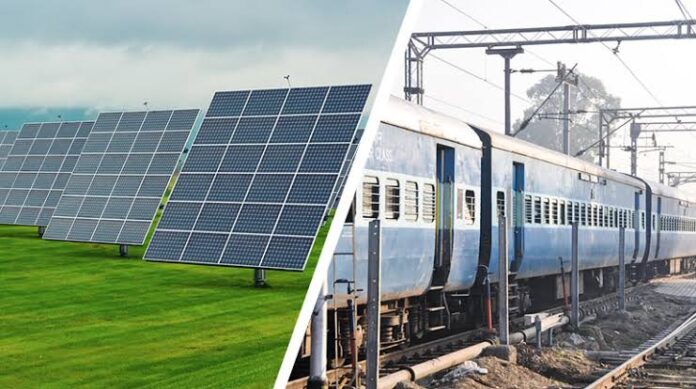Pakistan Railways (PR) has initiated a strategic shift towards solar energy by identifying 100 sites across its operations with high electricity consumption. This move is projected to generate annual savings of approximately Rs1 billion.
The transition is part of a broader strategy to enhance revenue while mitigating financial deficits, as outlined by senior PR officials.
The identified sites include railway housing colonies, hospitals, offices, and other infrastructure.
This transition to solar energy complements other revenue-enhancing initiatives such as increasing freight train operations and refurbishing coaches to attract commercial interest.
Despite a record revenue of Rs62.5 billion in the 2022-23 fiscal year, PR’s expenditures exceeded its income by Rs7.42 billion.
The organization’s total losses are reported at Rs48 billion, inclusive of Rs40 billion allocated for pension payments.
Current liabilities stand at Rs24 billion, with pensions and benevolent funds accounting for Rs20 billion. The expenditure on salaries and pensions has notably surpassed the total revenue generated.
For the 2023-24 fiscal year, PR has set a revenue target of Rs80 billion, aiming to exceed the previous year’s figures by over Rs10 billion.
Revenue from the last fiscal year included Rs62.5 billion from operations, Rs3.2 billion from land rent, and over Rs2 billion from scrap sales. Expenses comprised Rs40.607 billion for pensions and Rs35.7 billion on salaries.
PR has engaged NESPAK to conduct feasibility studies for the installation of solar panels at the designated sites.
To date, 16,535 out of 26,660 electric meters in railway residential colonies have been transitioned to Distribution Companies (Discos) and Karachi-Electric (KE), saving Rs1.3 billion.
























It’s concerning to see the organization’s financial report indicating such substantial losses, especially with a significant portion allocated for pension payments. The fact that expenditures on salaries and pensions have surpassed revenue raises red flags regarding financial sustainability. Setting ambitious revenue targets for the upcoming fiscal year seems optimistic given the current financial challenges. A comprehensive strategy to address the underlying issues and ensure long-term financial stability appears crucial for the organization’s future viability.